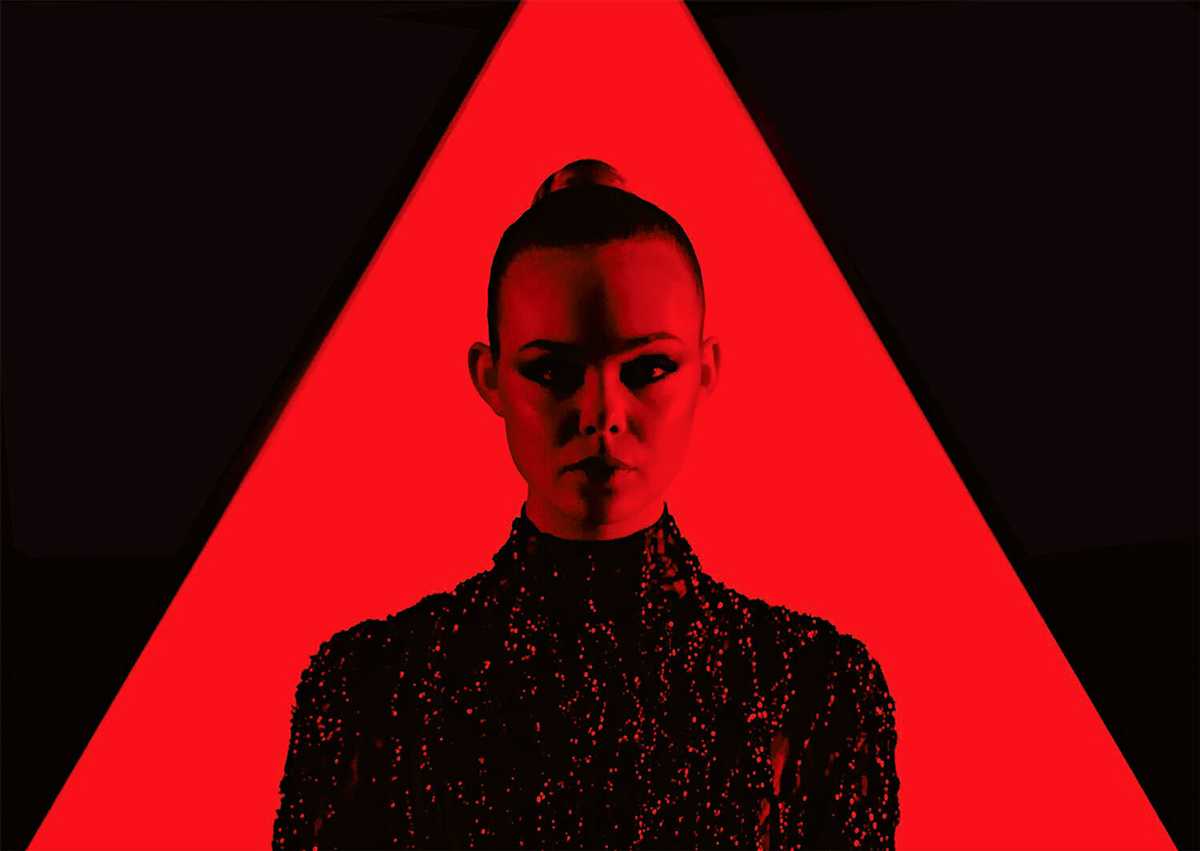The Neon Demon [2016] is the latest project from director Nicolas Winding Refn whose past work includes films such as the Pusher trilogy, Bronson [2008], Valhalla Rising [2009], Drive [2011] and the polarizing Only God Forgives [2013]. His latest project tells a tale of a young aspiring model Jesse (Elle Fanning) who moves to Los Angeles to pursue a career as a high fashion model.
All Eyes On Me… The Neon Demon is a film in which Refn makes a declaration that he is, without doubt, present—as unlike most opening credits that might say Director X presents Actor A, Actor B, and so on, Refn opens this film by literally saying, “Nicolas Winding Refn present” and there is little ambiguity that this is his work. For better or for worse, this is a film whose cup runneth over with visceral and arresting imagery. Admittedly, the story and characters are under-developed; the dialogue, on occasion, sounds robotic; and, one plot point may even seem non-sensical; but, what this film lacks in character development, it makes up for in intriguing images and show-stopping scenes. This, in and of itself, may be a bit empty—but, it also may be reflective of the film’s central thesis on beauty—and, say what you will about Refn, but if nothing else, this film will demand your attention; which, when fixed on this film for long enough, may reveal that it’s not all that empty after all. An example that comes to mind is his use of the Sierpinski triangle, in stage 1, in a runway scene to creatively demonstrate a pivotal moment in Jesse’s life. Furthermore, the cinematography is augmented by a pitch-perfect score from previous collaborator Cliff Martinez whose music helps to set a specific kind of cold and eerie tone. Consequently, images presented to us in The Neon Demon may not be as vacuous as first meets the eye. This film may not be typical of Refn’s previous work that features violent men doing violent things, but the pedigree is unmistakable.
Synecdoche, Los Angeles… Having said that, Refn does let references and iconography do some of the film’s heavy lifting and there is potential for such synecdoches to fall flat for some viewers. For instance, moments into the film, viewers will find themselves in the middle of a conversation about a lipstick called Red Rum. One girl quips to the others that women are more likely to purchase make-up if it references either food or sex. Seemingly, none of these women have seen or read The Shining, all thinking that the lipstick is referring to rum that is literally red; and it’s this scene that also establishes a through-line of the film: that the macabre is entwined with beauty; that not far beneath the veneer of beauty lies an essential savagery. Red Rum may be the name of a lipstick; and, it may make Jesse’s lips look sexy and provocative; but, it’s also murder spelled backwards and a reference to a film about obsession and madness. To drive this point home, this Red Rum scene is awash with neon pinks and blues that make the images both arresting and garish, which is evocative of what might result if a once-vibrant-Barbie-dream-house-turned-seedy-crack-den hosted an avant-garde soiree. The bathroom in which these girls are touching up their make-up also has marble patterned walls that, under a haze of neon pink light, is reminiscent of slabs of marbled red meat, raw and exposed. Do Refn’s metonyms ultimately work? To that end, I invite you to watch The Neon Demon to judge for yourself.
Beauty Is The Beast… At its core, this film is about beauty. The artificiality of Los Angeles, the horror elements, the world of high fashion… These are all incidental to and corollaries of an unhealthy obsession with beauty. Does this film have anything new to say about an unhealthy obsession with beauty? In short, the answer is no. But does it have something to say? To that, the answer is yes. For Jesse, beauty goes from being a means to and end, to being everything, to being the only thing, and unsurprisingly, this comes with consequences. Photoshoots are cold, clinical and sterile. The photographer is severe. The judgments are mercurial. There is nothing joyful or human about this kind of art; and, this film is a strong indictment of unhealthy obsessions with beauty; which, like fame, if it is your particular poison—both of which boils down to a need for attention—then it will be your demise. Beauty, like fame, can lift you up: it can make you a god among mortals (or, at least, that’s how it feels) but, like fame, beauty is also ephemeral. As quickly as it can build you up, it can also drag you down. It is the eponymous Neon Demon: bright and alluring, but also Mephistophelian. Some will take the Faustian deal—shave their jaws and pin their ears in order to wear a slick high fashion ponytail—while others will walk away, but feel no better about themselves. For any woman who has struggled with notions of beauty (which is all of us in one way or another), there are parts of The Neon Demon that will resonate deeply. Jesse will get devoured, but not in the way you might think. At the end of the day, The Neon Demon is a spin on old ideas, but its execution is, though not perfect, a solid effort.
A neon nightmare with a lingering afterimage.

